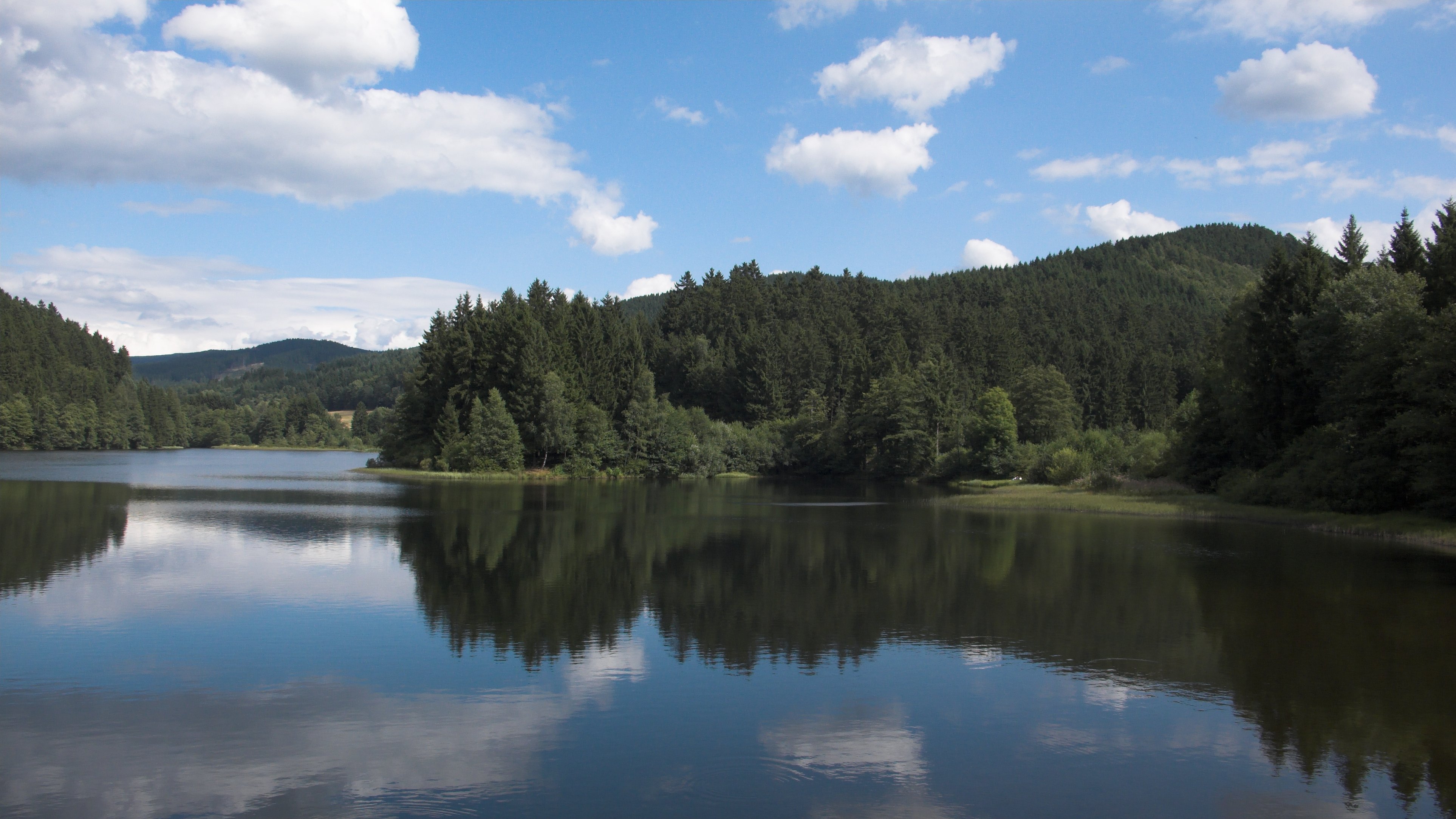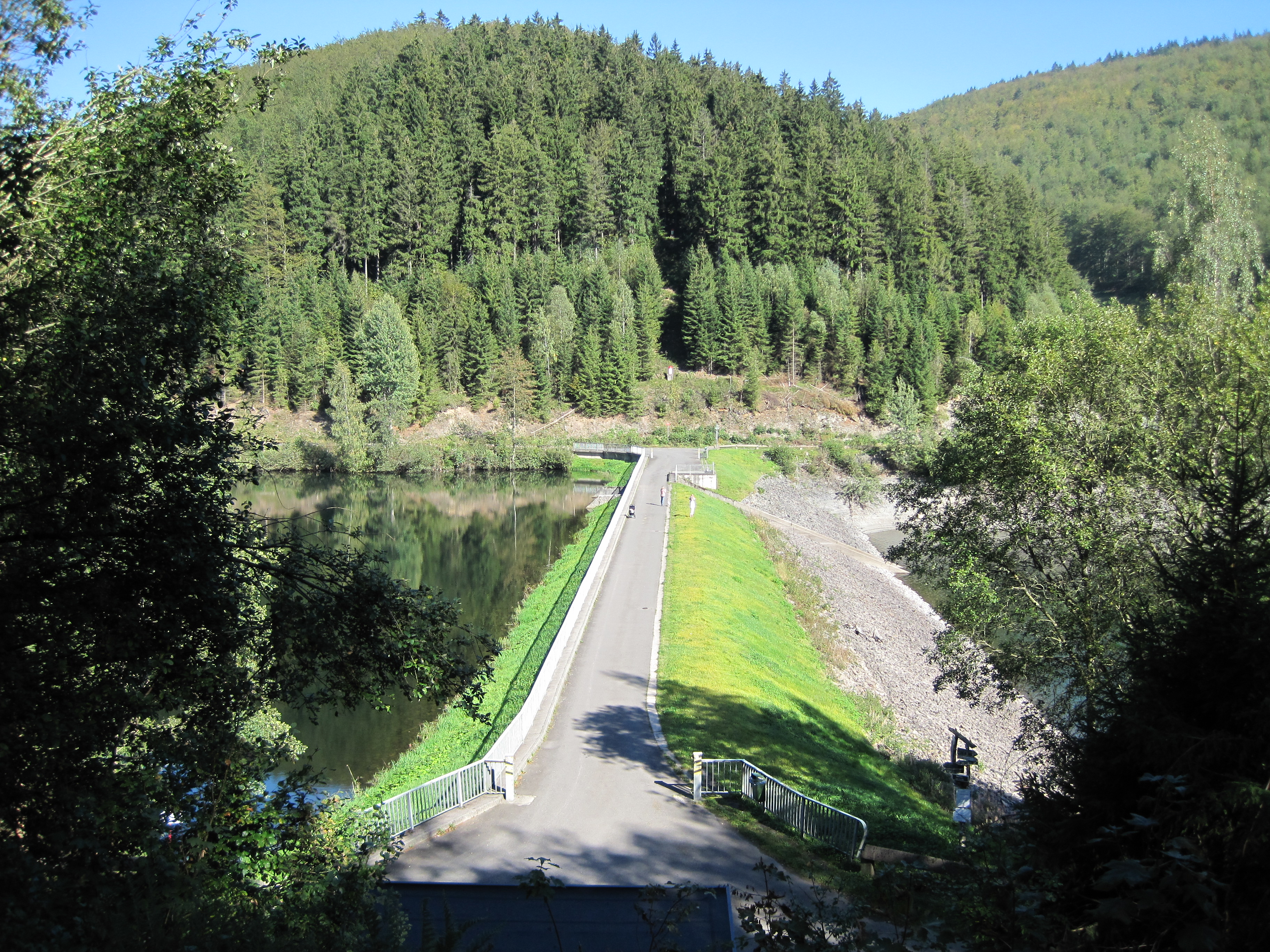|
Söse Dam
The Söse Dam is a dam in the Lower Saxon part of the Harz mountains near Osterode in the German state of Lower Saxony. It was the first modern dam and reservoir complex (German: ''Talsperre'') to be built in the Harz and was constructed by the ''Harzwasserwerke'' between 1928 and 1931. It is used for flood prevention, electricity generation, supplying drinking water and for raising water levels during times of low water. The construction of the dam cost 14.7 million Reichsmarks at the time. The ''Harzwasserwerke'' still operate the dam today. In 1933 construction began on a long-distance water pipe from the Söse reservoir, whose northern branch goes as far as Bremen. Today it mainly supplies towns and communities in the Hildesheim and Hanover areas. Since 1980 the town of Göttingen has also been supplied with drinking water from the reservoir. Main dam The main barrier is an earth-fill dam with a central concrete core and clay sealing. The hydro-electric power station, whic ... [...More Info...] [...Related Items...] OR: [Wikipedia] [Google] [Baidu] |
Germany
Germany,, officially the Federal Republic of Germany, is a country in Central Europe. It is the second most populous country in Europe after Russia, and the most populous member state of the European Union. Germany is situated between the Baltic and North seas to the north, and the Alps to the south; it covers an area of , with a population of almost 84 million within its 16 constituent states. Germany borders Denmark to the north, Poland and the Czech Republic to the east, Austria and Switzerland to the south, and France, Luxembourg, Belgium, and the Netherlands to the west. The nation's capital and most populous city is Berlin and its financial centre is Frankfurt; the largest urban area is the Ruhr. Various Germanic tribes have inhabited the northern parts of modern Germany since classical antiquity. A region named Germania was documented before AD 100. In 962, the Kingdom of Germany formed the bulk of the Holy Roman Empire. During the 16th ce ... [...More Info...] [...Related Items...] OR: [Wikipedia] [Google] [Baidu] |
Earth-fill Dam
An embankment dam is a large artificial dam. It is typically created by the placement and compaction of a complex semi-plastic mound of various compositions of soil or rock. It has a semi-pervious waterproof natural covering for its surface and a dense, impervious core. This makes the dam impervious to surface or seepage erosion. Such a dam is composed of fragmented independent material particles. The friction and interaction of particles binds the particles together into a stable mass rather than by the use of a cementing substance. Types Embankment dams come in two types: the earth-filled dam (also called an earthen dam or terrain dam) made of compacted earth, and the rock-filled dam. A cross-section of an embankment dam shows a shape like a bank, or hill. Most have a central section or core composed of an impermeable material to stop water from seeping through the dam. The core can be of clay, concrete, or asphalt concrete. This type of dam is a good choice for sites wi ... [...More Info...] [...Related Items...] OR: [Wikipedia] [Google] [Baidu] |
Dams In Lower Saxony
A dam is a barrier that stops or restricts the flow of surface water or underground streams. Reservoirs created by dams not only suppress floods but also provide water for activities such as irrigation, human consumption, industrial use, aquaculture, and navigability. Hydropower is often used in conjunction with dams to generate electricity. A dam can also be used to collect or store water which can be evenly distributed between locations. Dams generally serve the primary purpose of retaining water, while other structures such as floodgates or levees (also known as dikes) are used to manage or prevent water flow into specific land regions. The earliest known dam is the Jawa Dam in Jordan, dating to 3,000 BC. The word ''dam'' can be traced back to Middle English, and before that, from Middle Dutch, as seen in the names of many old cities, such as Amsterdam and Rotterdam. History Ancient dams Early dam building took place in Mesopotamia and the Middle East. Dams were used ... [...More Info...] [...Related Items...] OR: [Wikipedia] [Google] [Baidu] |
Dams In The Harz
In the Harz mountains, there is a higher than average number of dams with their associated reservoirs. The reason is that the Harz is one of the regions with the heaviest rainfall in Germany and so its water power was utilised very early on. The first dam (on the Upper Harz Ponds) was built to drive water-powered pumps and stamp mills used in the mines. At present, the Harz reservoirs provide hydroelectricity, drinking water and flood protection particularly when the snows melt in spring. The following is a list of dams in the Harz: * Ecker Dam which impounds the waters of the Ecker * Grane Dam which impounds the waters of the Grane * Hassel Auxiliary Dam which impounds the waters of the Hassel, is part of the Rappbode Dam system * Innerste Dam which impounds the waters of the Innerste * Kelbra Dam which impounds the waters of the Helme * Königshütte Dam impounds the waters of both the Warme and Kalte Bode, and is part of the Rappbode Dam system * Mandelholz Dam (flood co ... [...More Info...] [...Related Items...] OR: [Wikipedia] [Google] [Baidu] |
Hydroelectric Power Stations In Germany
Hydroelectricity, or hydroelectric power, is electricity generated from hydropower (water power). Hydropower supplies one sixth of the world's electricity, almost 4500 TWh in 2020, which is more than all other renewable sources combined and also more than nuclear power. Hydropower can provide large amounts of low-carbon electricity on demand, making it a key element for creating secure and clean electricity supply systems. A hydroelectric power station that has a dam and reservoir is a flexible source, since the amount of electricity produced can be increased or decreased in seconds or minutes in response to varying electricity demand. Once a hydroelectric complex is constructed, it produces no direct waste, and almost always emits considerably less greenhouse gas than fossil fuel-powered energy plants. [...More Info...] [...Related Items...] OR: [Wikipedia] [Google] [Baidu] |
List Of Dams In The Harz
In the Harz mountains, there is a higher than average number of dams with their associated reservoirs. The reason is that the Harz is one of the regions with the heaviest rainfall in Germany and so its water power was utilised very early on. The first dam (on the Upper Harz Ponds) was built to drive water-powered pumps and stamp mills used in the mines. At present, the Harz reservoirs provide hydroelectricity, drinking water and flood protection particularly when the snows melt in spring. The following is a list of dams in the Harz: * Ecker Dam which impounds the waters of the Ecker * Grane Dam which impounds the waters of the Grane * Hassel Auxiliary Dam which impounds the waters of the Hassel, is part of the Rappbode Dam system * Innerste Dam which impounds the waters of the Innerste * Kelbra Dam which impounds the waters of the Helme * Königshütte Dam impounds the waters of both the Warme and Kalte Bode, and is part of the Rappbode Dam system * Mandelholz Dam (flood co ... [...More Info...] [...Related Items...] OR: [Wikipedia] [Google] [Baidu] |
List Of Reservoirs And Dams In Germany
These are dams and reservoirs in Germany. The German word ''Talsperre'' (literally: valley barrier) may mean dam, but it is often used to include the associated reservoir as well. The reservoirs are often separately given names ending in ''-see'', ''-teich'' or ''-speicher'' which are the German words for "lake", "pond" and "reservoir", but in this case all may also be translated as "reservoir". The more specific word for the actual dam is ''Staumauer'' and for the lake is ''Stausee''. Baden-Württemberg * Kleine Kinzig Dam *Nagold Dam *Schluchsee - highest reservoir lake in Germany and largest lake in the Black Forest * Schwarzenbach Dam Bavaria * Ellertshäuser See *Großer Brombachsee *Forggensee *Frauenau Dam *Sylvenstein Dam * Altmühlsee *Rothsee * Hahnenkammsee Brandenburg *Spremberg Reservoir Hesse *Aar Dam * Affoldern Reservoir * Antrift Dam * Diemelsee (reservoir) *Driedorf Reservoir *Edersee Lower Saxony * Ecker Dam * Grane Dam * Innerste Dam * Oder Dam * Oderteich ... [...More Info...] [...Related Items...] OR: [Wikipedia] [Google] [Baidu] |
Pre-dam
A forebay is an artificial pool of water in front of a larger body of water. The larger body of water may be natural or man-made. at www.wisegeek.com. Retrieved on 13 Jun 2013 Forebays have a number of functions. They are used in to act as a buffer during or s, impounding water and releasing in a controlled way into the larger waterbody. They may be used upstream of |
Abutment
An abutment is the substructure at the ends of a bridge span or dam supporting its superstructure. Single-span bridges have abutments at each end which provide vertical and lateral support for the span, as well as acting as retaining walls to resist lateral movement of the earthen fill of the bridge approach. Multi-span bridges require piers to support ends of spans unsupported by abutments. Dam abutments are generally the sides of a valley or gorge, but may be artificial in order to support arch dams such as Kurobe Dam in Japan. The civil engineering term may also refer to the structure supporting one side of an arch, or masonry used to resist the lateral forces of a vault.Pevsner, N. (1970) ''Cornwall''; 2nd ed. Harmondsworth: Penguin; p. 245 The impost or abacus of a column in classical architecture may also serve as an abutment to an arch. The word derives from the verb "abut", meaning to "touch by means of a mutual border". Use in engineering An abutment may be us ... [...More Info...] [...Related Items...] OR: [Wikipedia] [Google] [Baidu] |
Spillway
A spillway is a structure used to provide the controlled release of water downstream from a dam or levee, typically into the riverbed of the dammed river itself. In the United Kingdom, they may be known as overflow channels. Spillways ensure that water does not damage parts of the structure not designed to convey water. Spillways can include floodgates and fuse plugs to regulate water flow and reservoir level. Such features enable a spillway to regulate downstream flow—by releasing water in a controlled manner before the reservoir is full, operators can prevent an unacceptably large release later. Other uses of the term "spillway" include bypasses of dams and outlets of channels used during high water, and outlet channels carved through natural dams such as moraines. Water normally flows over a spillway only during flood periods, when the reservoir has reached its capacity and water continues entering faster than it can be released. In contrast, an intake tower is a structure ... [...More Info...] [...Related Items...] OR: [Wikipedia] [Google] [Baidu] |






